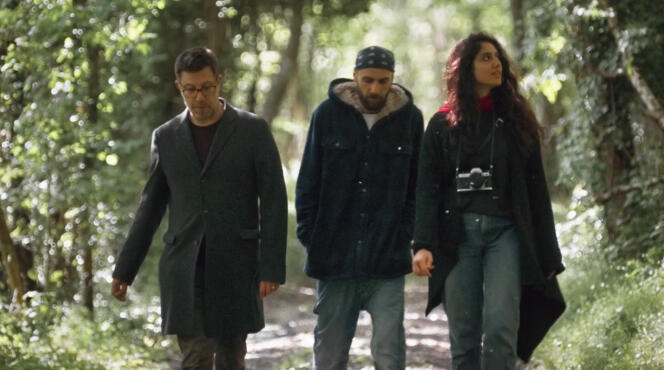THE “WORLD’S” OPINION – MUST SEE
Their first meeting dates back to June 2016. She occurs at the University of Paris-I Panthéon-Sorbonne, where an intensive French learning program has been set up for refugees. That day, Laurent Rodriguez, a sound engineer who wants to move into directing, the son of a Spanish refugee who has been working on the question of exile for a long time, meets Sara, Hasan, Ghaith and Khairy. Four young Syrians in their twenties who fled their country and recently arrived in France, where they are preparing to take the French test to join the second promotion. At their side stands Emmanuel, a professor who is very involved in the program and who will later become their friend.
Everyone formed a clan, exchanged for six years, nourished this film which is released in theaters today. Even if you go to the Moon is their work: a documentary in which everyone participated, through their presence, their words, their thoughts on the project, but also the contribution that some made to the production, Khairy having worked on the music of the film, Ghaith on the translation of the sequences in Arabic and Sara drawing animated beaches.
From this collective enterprise was born a deeply warm, embodied, intelligent film, which questions, over time, the effects of uprooting and the contradictory feelings it provokes: identity, the feeling of belonging, mourning and reconstruction. , the need to adapt and reinvent oneself as memories fade, then the sadness, the fear we feel at the idea that they might disappear. What do we also lose by abandoning the use of our mother tongue, by now thinking and dreaming in another?
Fragmented lives
It’s all this that fuels the conversations during meals at the kitchen table at Emmanuel’s, where Sara, Hasan, Ghaith and Khairy have come to spend a weekend. Each one exposing the way they feel about this exile, this new life for which they are preparing. From stage to stage, emotions evolve, words change, contradict each other, temperaments and stories become clearer, to which it is very difficult not to become attached.
The story and the portrait of each person take shape thanks to the words, but also to the formal construction that Laurent Rodriguez chose to adopt. Which builds its story around three periods in the lives of Sara, Hasan, Ghaith and Khairy: the first months following their arrival in France (filmed in black and white, like a time already past); the present and what they have become (in colors); the past through their memories of Syria (rendered in 2D animation). These three eras, each illustrated by their own aesthetic, intertwine, thus restoring unity to these fragmented lives while materializing the sensations that relate to them. The different sequences underline, through their confrontation, all the nuance of the subject.
You have 22.3% of this article left to read. The rest is reserved for subscribers.
